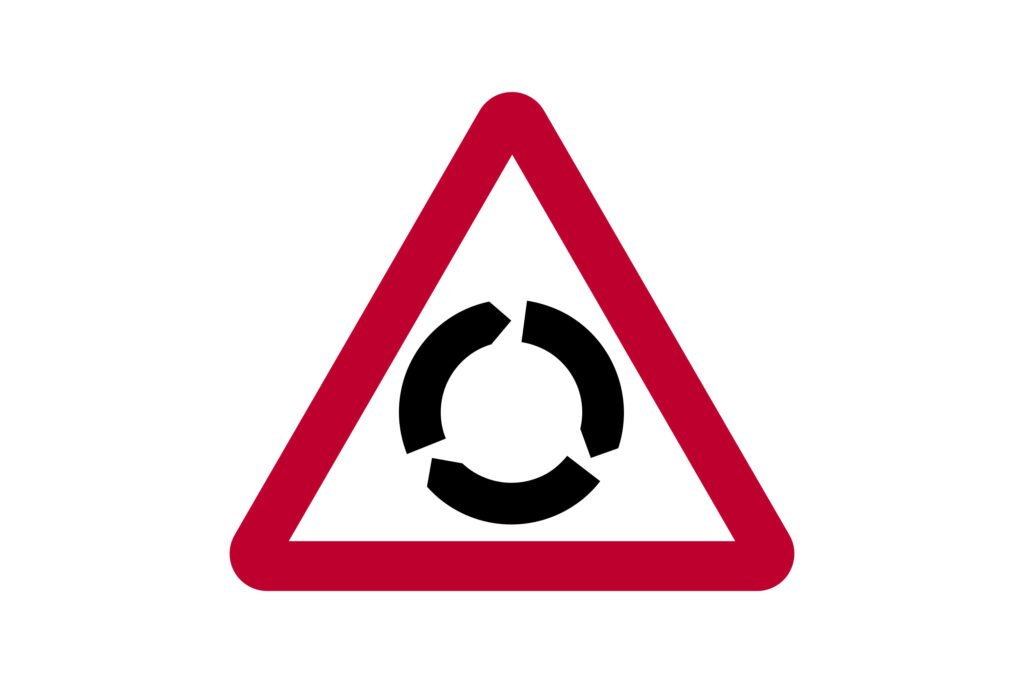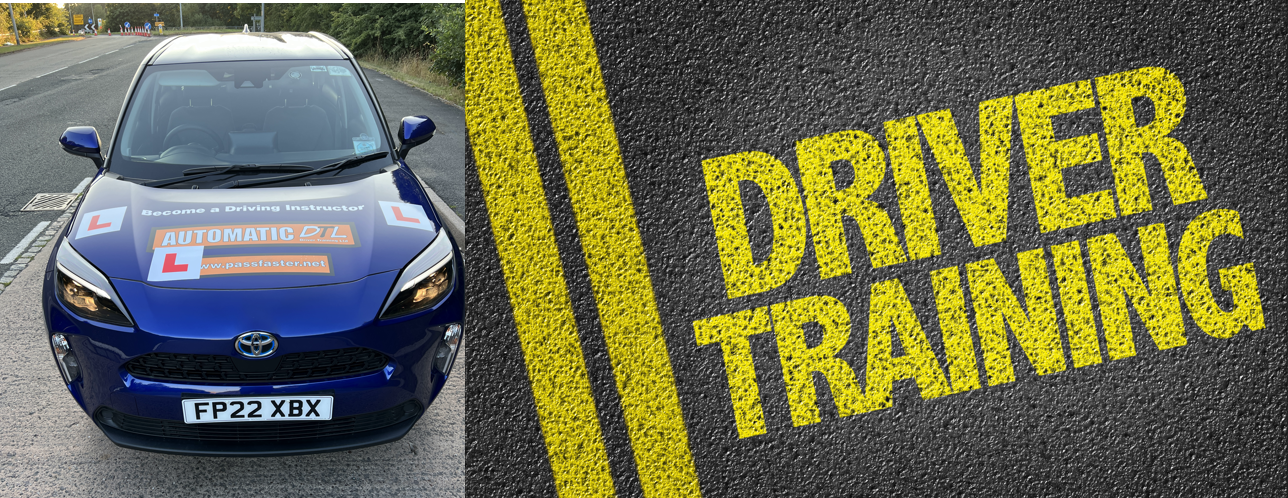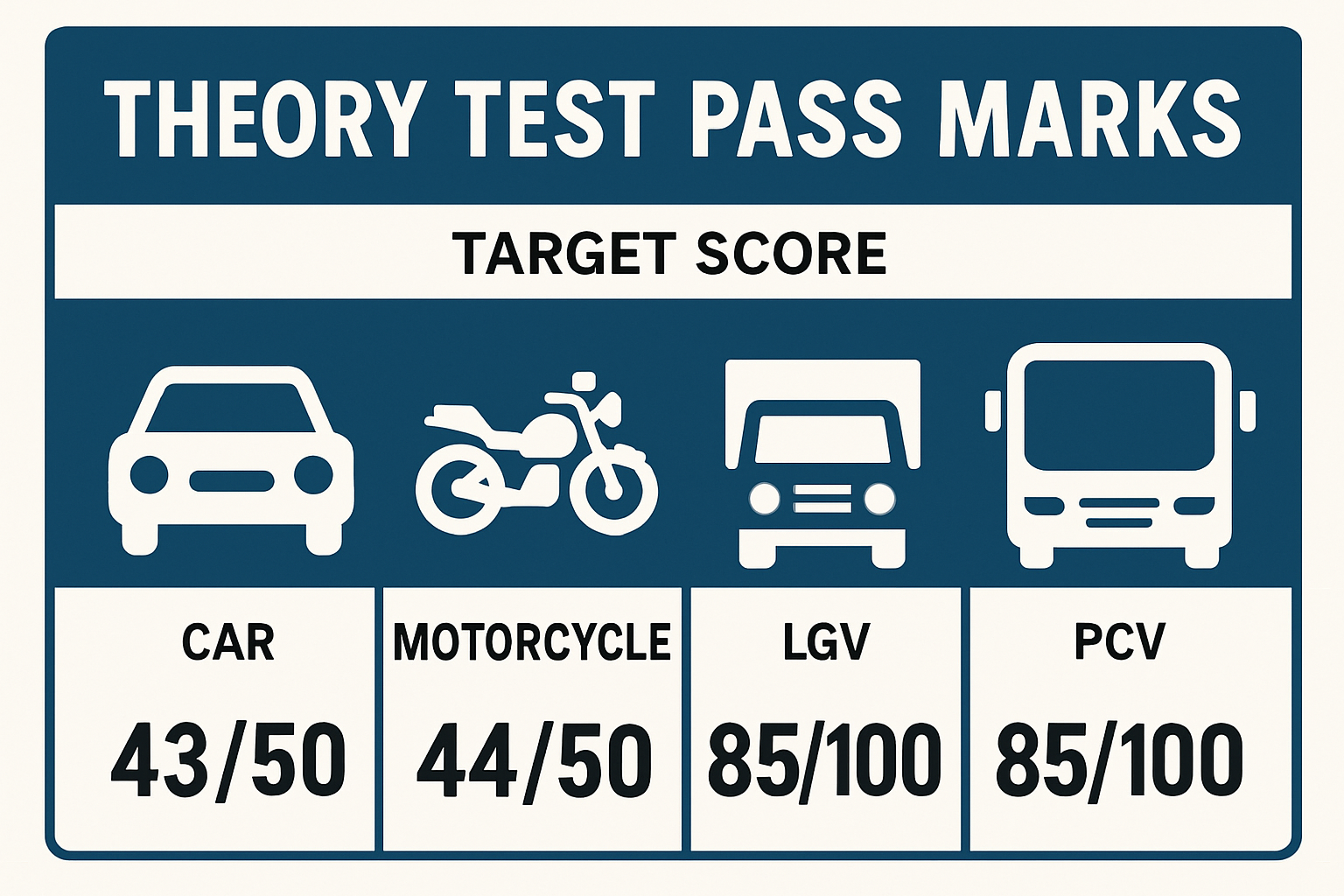Roundabouts vs Mini Roundabouts:

Roundabouts are a core feature of UK driving, and the DVSA makes sure learner drivers understand how to deal with them in both the theory test and practical test. Two signs come up regularly — the roundabout warning sign and the mini roundabout mandatory sign. Although they look similar, they mean different things and appear in different situations.
Let’s set out the facts exactly as the DVSA defines them.
1. Roundabout

- Sign: A red-bordered triangular warning sign with three black arrows circling clockwise.
- Meaning: Warns that a roundabout is ahead.

- Rules:
- Give way to traffic approaching from the right unless road markings or traffic lights direct otherwise.
- **There are roundabouts that you need to give way from the left**
- Use the correct approach lane depending on which exit you intend to take.
- Signal appropriately: normally left on exit, unless signs/markings instruct differently.
This sign does not tell you what manoeuvre to make — it simply warns that a roundabout is coming up so you can prepare.
2. Mini Roundabout

- Sign: A blue circular mandatory sign with three white arrows circling clockwise.
- Meaning: You must follow the roundabout rule at this junction.

- Road Layout: The centre is marked by a white painted circle (sometimes domed).
- Rules:
- Give way to traffic from the right.
- You must drive around the central marking, not over it, unless it’s unavoidable (for example, in a larger vehicle).

- Approach slowly — mini roundabouts are usually in built-up areas with tight approaches.
Unlike the triangular roundabout sign, this is an instruction sign — it tells you what you must do.
3. Key Differences (DVSA Focus)
| Feature | Roundabout | Mini Roundabout |
|---|---|---|
| Sign shape | Red triangle (warning) | Blue circle (mandatory) |
| Arrow colour | Black arrows | White arrows |
| Purpose | Warns of a roundabout ahead | Instructs you to follow roundabout rules |
| Centre | Raised island | Painted circle (sometimes domed) |
| Rule | Give way to the right | Give way to the right (must go around marking if possible) |
What are the main differences in their shapes and purposes?
The roundabout warning sign is shaped as a red triangle and serves to warn drivers of an upcoming roundabout, guiding them to prepare and give way. The mini roundabout sign is a blue circle and functions as an instruction sign, telling drivers to follow specific roundabout rules, including giving way to traffic from the right and navigating around the painted central circle.
What do the different signs for roundabouts and mini roundabouts mean?
A roundabout warning sign is a red triangle with three black arrows indicating a roundabout ahead, warning drivers to prepare. The mini roundabout sign is a blue circle with white arrows, instructing drivers to follow roundabout rules and giving way to traffic from the right.
What are the key rules to follow when encountering a mini roundabout?
At a mini roundabout, you must give way to traffic from your right and drive around the painted central circle unless it is unavoidable to cross, especially in larger vehicles. Approach the mini roundabout slowly, as they are typically located in built-up areas with tight approaches, and always follow the roundabout rules.
When approaching a roundabout, watch for the warning sign and be prepared to give way to traffic from your right unless traffic lights or road markings indicate otherwise. Use the correct approach lane depending on your intended exit, and signal appropriately—usually left when exiting—unless signs or road markings specify differently.
What is the difference between a roundabout and a mini roundabout in the UK?
A roundabout is a traffic feature warning sign with a red-bordered triangular shape indicating a roundabout ahead, where vehicles give way to traffic approaching from the right and follow specific lane rules. A mini roundabout, on the other hand, is a blue circular mandatory sign instructing drivers to follow roundabout rules, usually found in built-up areas with tight approaches, and is marked by a painted circle at the center.
Contents
- 1 Roundabouts vs Mini Roundabouts:
- 1.1 1. Roundabout
- 1.2 2. Mini Roundabout
- 1.3 3. Key Differences (DVSA Focus)
- 1.3.1 What are the main differences in their shapes and purposes?
- 1.3.2 What do the different signs for roundabouts and mini roundabouts mean?
- 1.3.3 What are the key rules to follow when encountering a mini roundabout?
- 1.3.4 How should I approach and navigate a roundabout in the UK?
- 1.3.5 What is the difference between a roundabout and a mini roundabout in the UK?


